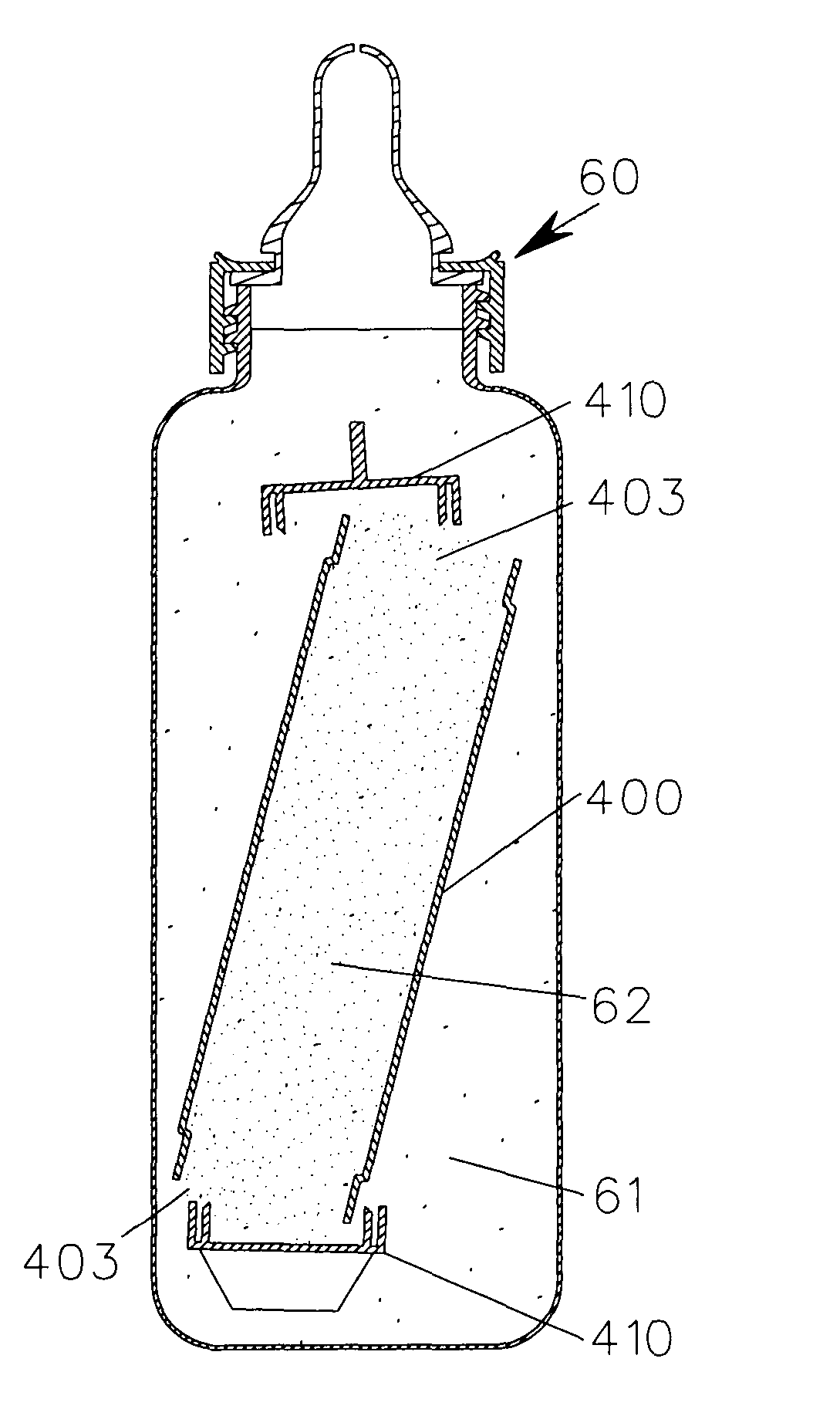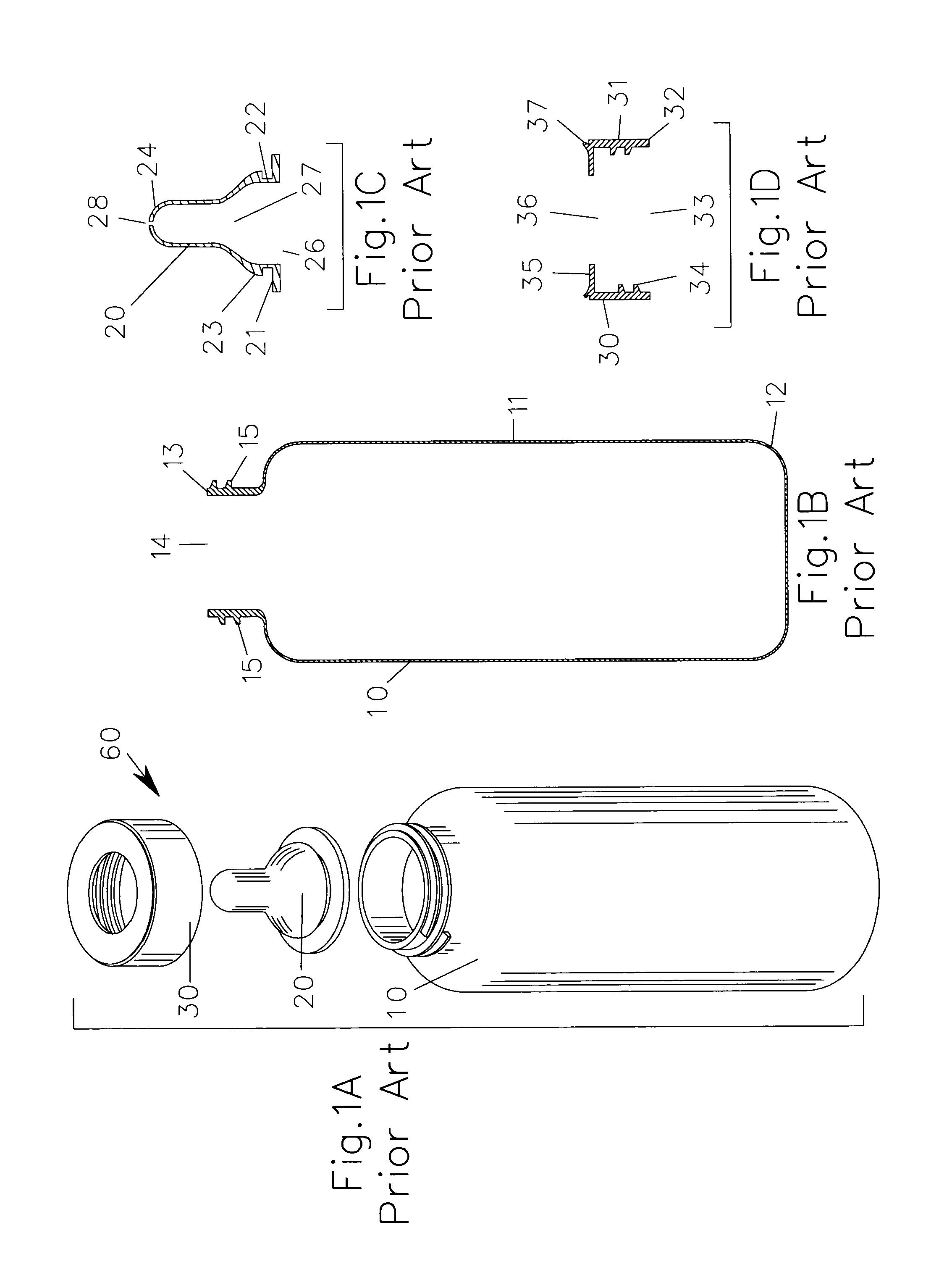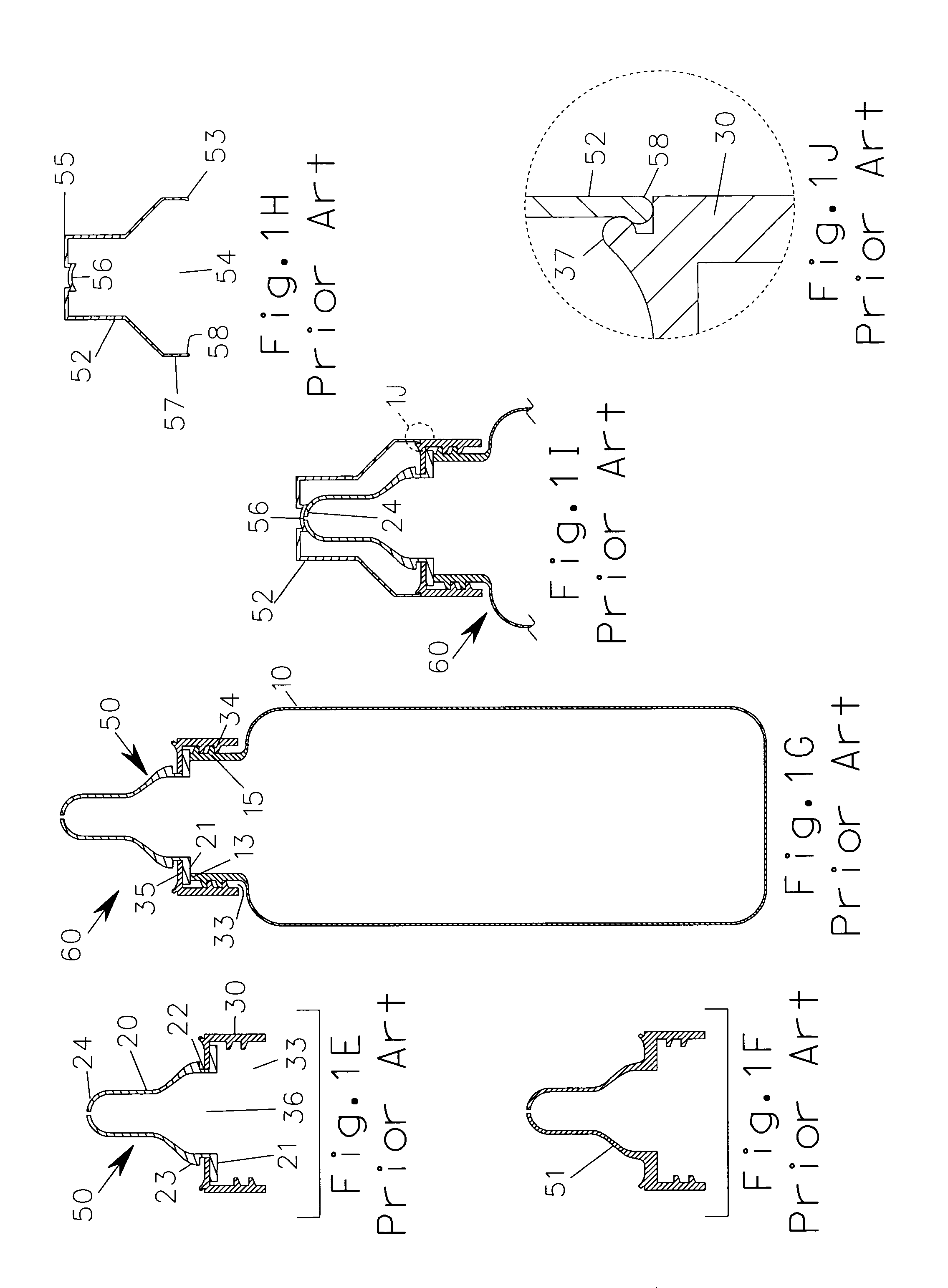Bottle insert for storing and dispensing baby formula
- Summary
- Abstract
- Description
- Claims
- Application Information
AI Technical Summary
Benefits of technology
Problems solved by technology
Method used
Image
Examples
Embodiment Construction
[0074] For readiest understanding of the invention, it is helpful to describe a prior art feeding bottle in some detail.
[0075] Thus, in FIGS. 1A to 1D, the components of a typical prior art bottle assembly 60 are shown, comprising a bottle 10, a nipple 20, and a collar 30 (FIG. 1A). Bottle 10 (FIG. 1B) is formed of plastic or glass. Bottle 10 is of hollow construction, with outer wall 11 closed off at closed end 12, and with an opening 14 at open end 13. Open end 13 has exterior threads 15. Nipple 20 (FIG. 1C), formed of silicone or latex, has an outward flange 21. Nipple 20 has a neck 22 formed by flange 21 and a retaining rib 23. Nipple 20 has a closed end 24 with a plurality of perforations 28. Nipple 20 is of hollow construction, forming a cavity 27. Flange 21 has an opening 26 that allows a liquid (not shown) to be drawn into cavity 27 and out through perforations 28. Collar 30 (FIG. 1D), which is formed of plastic, has a side 31 with interior threads 34. Collar 30 has an inwa...
PUM
 Login to View More
Login to View More Abstract
Description
Claims
Application Information
 Login to View More
Login to View More - R&D
- Intellectual Property
- Life Sciences
- Materials
- Tech Scout
- Unparalleled Data Quality
- Higher Quality Content
- 60% Fewer Hallucinations
Browse by: Latest US Patents, China's latest patents, Technical Efficacy Thesaurus, Application Domain, Technology Topic, Popular Technical Reports.
© 2025 PatSnap. All rights reserved.Legal|Privacy policy|Modern Slavery Act Transparency Statement|Sitemap|About US| Contact US: help@patsnap.com



